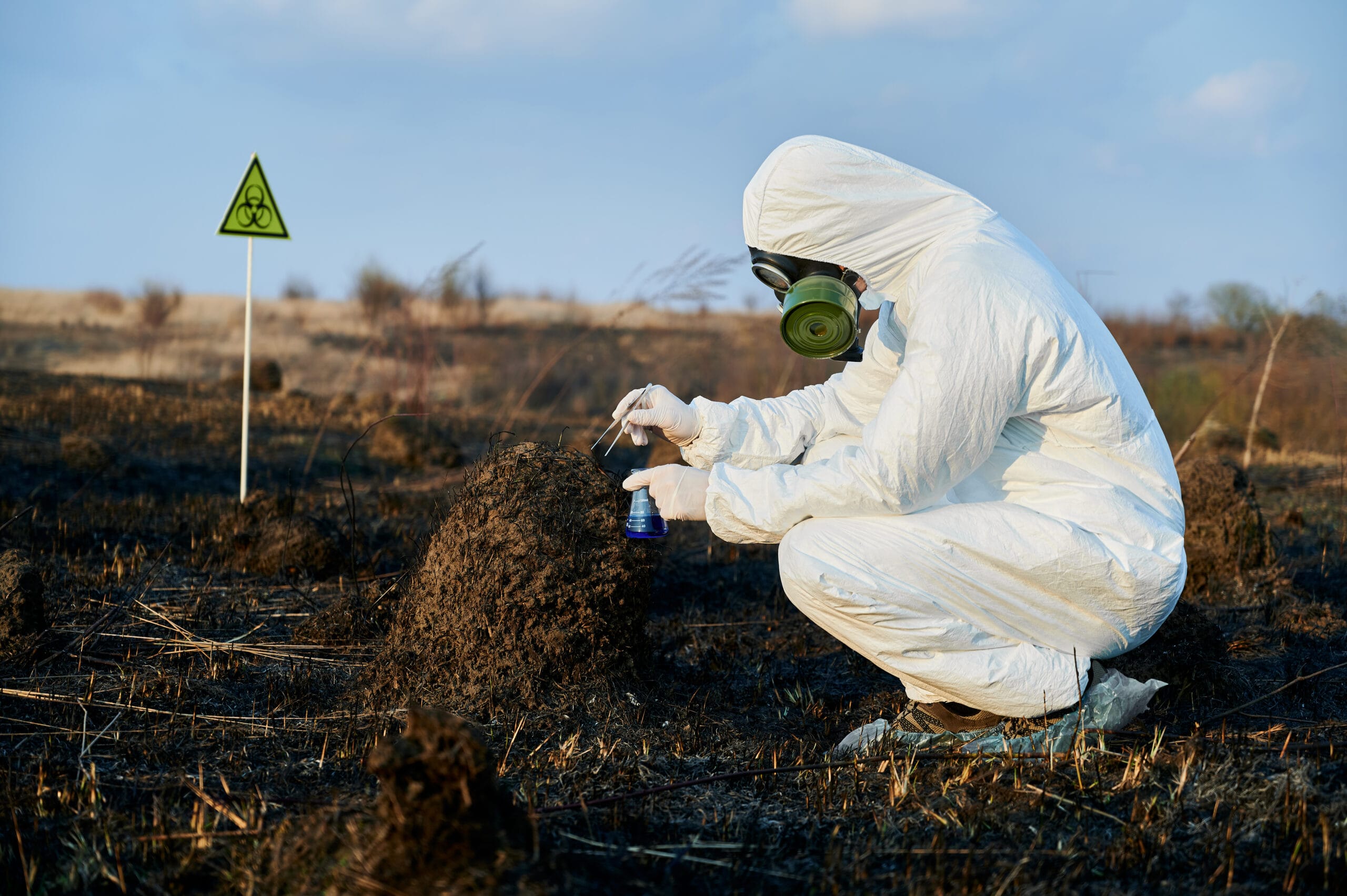
Utilization of Bioindicators for Monitoring Pesticide Pollution

Excessive use of pesticides can lead to various environmental problems, ranging from soil and water pollution to health disturbances in humans and non-target organisms. Toxic substances from pesticides can enter the body through the skin, respiratory tract, or digestive system, accumulate in organs, and disrupt hormonal, nervous, and immune systems. To monitor these impacts, researchers now widely use bioindicators, living organisms that signal environmental pollution through physiological or behavioral changes resulting from exposure to harmful substances.
- Pollution Caused by Pesticide Use
- The Role and Criteria of Bioindicators in Monitoring Pesticide Pollution
Pollution Caused by Pesticide Use
Pest management in intensive agriculture, such as in the cultivation of fruits, vegetables, and cereals, typically involves the use of chemical pesticides both before and after harvest. Pesticides are used to control pests that can damage crops, but their massive use also results in the release of large amounts of toxic pollutants into the environment. One of the biggest challenges in achieving sustainable agriculture today is the pollution caused by intensive pesticide application.
Although pesticides are sprayed directly onto soil or crops, only about 1% actually reaches the intended target pests. The rest disperses into the surrounding environment, polluting soil, water, and air, and threatening biodiversity and food security. With the global population projected to reach 9.2 billion by 2050, food production will need to increase by up to 70%.
In this context, pesticides are still considered an essential component for maintaining productivity and food security, even though non-chemical methods also play a significant role. Therefore, proper pesticide management must be accompanied by efforts to accurately monitor pollution levels, particularly in soil, water, and air.
The Role and Criteria of Bioindicators in Monitoring Pesticide Pollution
Biomonitoring, or biological monitoring, is the systematic use of living organisms to assess environmental conditions or detect changes in the environment. Bioindicator organisms can reflect pollution levels through the accumulation of toxic substances in their bodies. By observing physiological changes or population shifts in certain organisms, we can evaluate environmental quality and detect early impacts that may pose risks to human health.
Therefore, the use of bioindicators has become an important method for assessing pollution levels caused by human activities. The environmental quality status can be qualitatively indicated by the presence of bioindicators, living organisms such as plants, animals, or microbes that are sensitive to pollutants. Bioindicators can reveal the gradual effects of various types of pollution and play a crucial role in monitoring ecosystem changes.
Their presence reflects the surrounding environmental conditions and can serve as an early warning system against disturbances resulting from human activity. Compared to chemical methods like GC-MS, which are expensive and require sophisticated equipment, monitoring using bioindicators is considered more efficient and cost-effective, especially for evaluating the success of bioremediation. These organisms are capable of accumulating toxic substances in their bodies, thereby reflecting the degree of pollution.
For example, fish can respond quickly to changes in water quality, making them important biological indicators for detecting aquatic pollution. The selection of bioindicators should consider several criteria, such as being easily recognizable by non-experts, available year-round, abundant, widely distributed, and sensitive to environmental stress. These organisms should also be easy to collect, cost-effective, and suitable for laboratory experiments.
Bioindicator species serve to monitor environmental changes and provide early warning signals of ecosystem disruption. By observing these organisms, we can estimate the natural conditions of an area and assess its pollution level. Monitoring pesticide pollution requires accurate data to ensure environmental safety and ecosystem sustainability.
Through laboratory testing, pesticide residue levels and their impact on bioindicator organisms can be scientifically determined. This step is crucial to supporting more responsible and sustainable environmental management policies. Conduct pesticide laboratory testing and bioindicator analysis at a trusted laboratory with a team of experts with over 25 years of experience.
Each test is conducted thoroughly according to Ministry of Agriculture and the latest scientific methods to ensure valid and reliable results. Ensure the environmental quality and safety of your products through accurate and comprehensive testing. Ensure the environmental quality and safety of your products through accurate and comprehensive testing.
Author: Dherika
Editor: Sabilla Reza
References:
Abdel-Aziz, N., Shalaby, S., & Ahmed, E. (2021). Using of Bioindicators for Monitoring Pesticides Pollution. Mauritius: LAP LAMBERT Academic Publishing.
Hung, C.-C., Yiin, L.-M. (2023). Availability of Using Honeybees as Bioindicators of Pesticide Exposure in the Vicinity of Agricultural Environments in Taiwan. Toxics, 11(703), 1-10. https://doi.org/10.3390/toxics11080703



